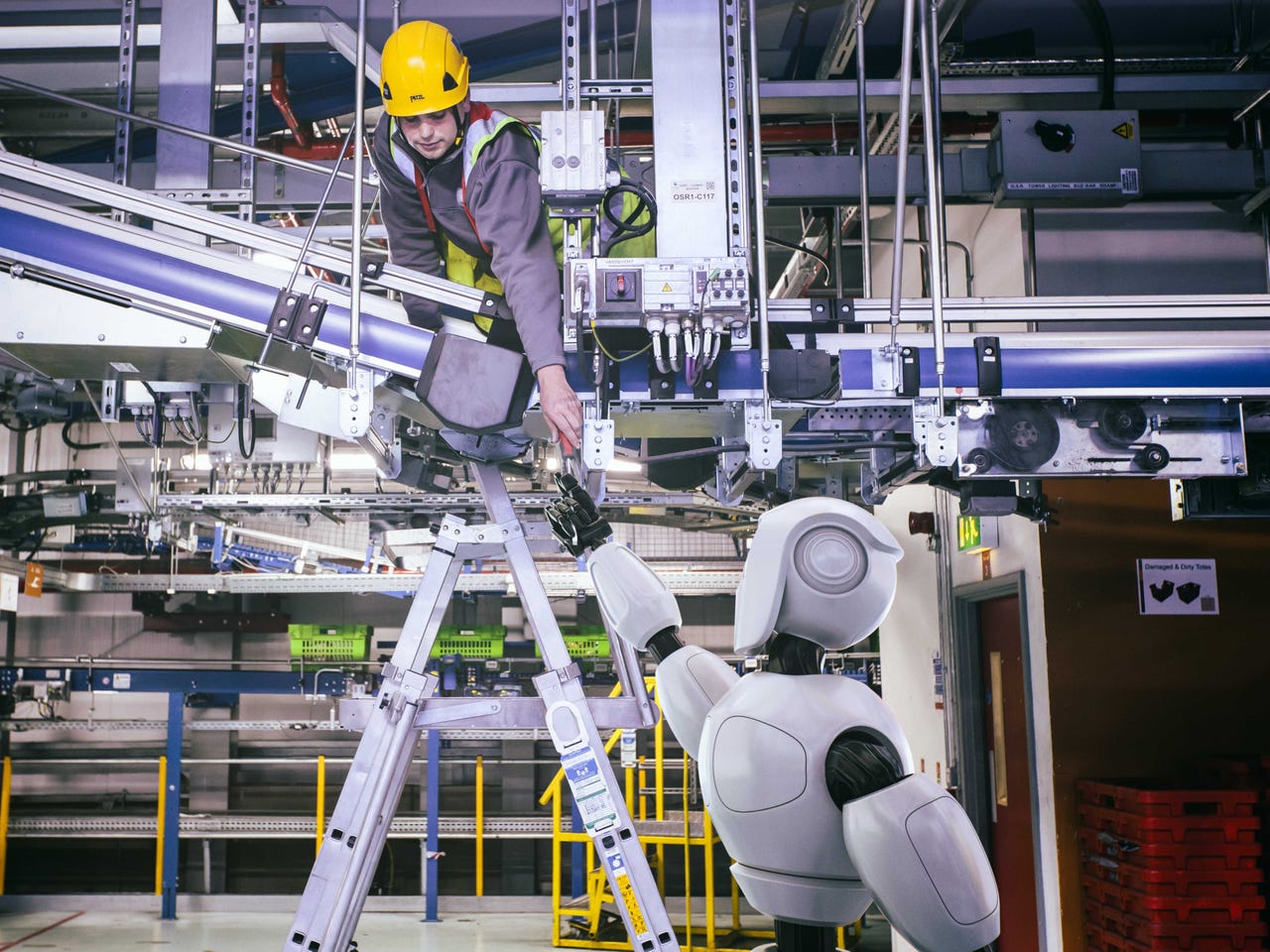Watch: Ocado's grocery robot can pick up more than 50,000 items


Robots are very good at doing prescribed tasks over and over--welding the same joint, for example, or hanging a car door on a manufacturing line. But when you introduce variability, things get a lot more complicated.
That's the challenge grocery fulfillment giant Ocado faced when trying to design a robot that could pick up every unit in its 50,000 item catalog.
It's an important hurdle. Object-agnostic picking and placing robots will be necessary to move to truly lights-out autonomous fulfillment warehouses, which is the goal of just about every e-commerce fulfillment company in the post-Amazon world.
Currently, much of the picking and placing that happens in those centers is handled by human workers. However you feel about the effects of automation on employment, from the standpoint of an fulfillment operations manager humans are expensive, slow, and error-prone. Turnover is also high in the fulfillment industry, where most jobs are low-paying.
Ocado's solution is remarkably simple given the complexity of the problem it solves. The so-called pick station consists of a suction cup on the end of an articulated arm. "The arm is equipped with a pipe running to an air compressor," according to an Ocado spokesperson, "which is capable of lifting items regardless of their deformability and shape, as long as they are within the weight restriction and the suction cup can create an airtight seal with the item's surface (i.e it has a big enough surface available and is not porous)."
It's a real case study in engineering for simplicity. "We could have embarked on a mission to model every single item in our catalogue, but we knew there must be a quicker and more efficient method." Instead, the system uses a 3D vision system that identifies grasp points on the target object. Built-in sensors ensure the arm won't crush or damage the object during picking.
That means engineers won't have to program in new SKUs as they're added to the catalog.
"The fact we found a way to bypass modeling our SKUs also meant that we could pick a greater range of items than many industrial picking systems," according to the spokesperson. "All in all, the system is streamlined and flexible."